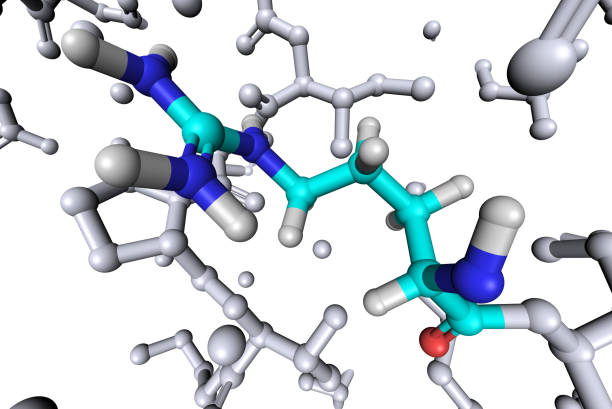Currently, peptide drugs have been used in different therapeutic areas, such as diabetes, allergy, anti-infection, obesity, diagnosis, oncology, arthritis and cardiovascular diseases.
Compared with traditional small-molecule chemical drugs, active peptide drugs have unique advantages such as small molecular weight, simple structure and no immunogenicity; a clear mechanism of action and low side effects; high synthetic purity and easy synthesis.
In recent years, the compound growth rate of the global peptide drug market is above 12%, and the market size is close to $20 billion, which is higher than the overall drug market.
According to the report of Transparency Market Research, the global peptide drug market is expected to reach US$23.7 billion in 2020, which has become an important direction of new drug research and development for foreign pharmaceutical companies. Pharmaceutical giants Pfizer, Merck, Roche, Eli Lilly, Novartis, Sanofi, Bayer and other large multinational pharmaceutical companies have been investing in the research and development of peptide drugs in recent years. At present, the global representative peptide drugs are liraglutide, dulaglutide, glatiramer acetate, leuprorelin acetate, octreotide acetate, goserelin, and eserin. (goserelin) and exenatide.
With approximately 116 million people living with diabetes in 2019, China has become the country with the largest number of people living with diabetes in the world. India (72.9 million people) and the U.S. (30.2 million people) rank second and third, respectively. The global diabetes market is expected to exceed US$124 billion by 2022, with a steady growth trend and promising market potential.
Diabetes is a chronic disease with many risk factors, complex pathogenesis and a lifelong course. Patients with hyperglycemia are often accompanied by hypertension, hyperlipidemia and insulin resistance. Hypertension and hyperglycemia often occur together, while about 60% of patients with hypertension may have increased blood sugar or abnormal glucose tolerance.
Pre-diabetes is mainly based on lifestyle interventions, and the initial stage is to control blood glucose with oral hypoglycemic drugs represented by metformin. When the patient’s glycosylated hemoglobin still exceeds 7 after the high dose of oral hypoglycemic drugs, insulin therapy is required. Insulin is the most important part of the third and fourth-line treatment and the last line of defense for diabetic patients. In recent years, DPP-4 inhibitors, GLP-1 receptor agonists, and SGLT2 inhibitor drugs have grown at a considerable rate.
In the 1980s, glucagon-like peptide-1 (GLP-1) was discovered to have physiological effects such as glucose-dependent stimulation of insulin synthesis and secretion, inhibition of islet B-cell apoptosis, and inhibition of glucagon secretion.GLP-1 and glucose-dependent proinsulin secretory polypeptide (GIP) are released from the intestine throughout the day and their levels increase after meals. GLP-1 and GIP increase insulin synthesis and release when blood glucose concentrations are normal or elevated. the activity of GLP-1 and GIP is inhibited by the dipeptidyl peptidase DPP-IV ( DPP-IV ), which rapidly hydrolyzes enteroglucagon and inactivates it. Inhibition of DPP-IV activity reduces the degradation of enteroglucagon, which increases the concentration of active GLP-1 and GIP in plasma and promotes insulin release, thereby reducing blood glucose levels.
Therefore, peptide drugs based on DPP-IV inhibition are also hot spots for development, but the current research is still focused on the development and utilization of related functional peptides, and no related peptide drugs have been reported to the market.
Most of the approved peptide drugs for glycemic control in diabetic patients are GLP-1 receptor agonists, and there are 8 GLP-1 receptor agonists available worldwide, namely somalutide, exenatide, liraglutide, abilify, dulaglutide, lisnatide and benalutide. As far as somalutide is concerned, glucose reduction and weight loss in type 2 diabetic patients treated with once-weekly somalutide injection were significantly better than placebo, selegiline, glargine insulin U100 and extended-release exenatide. And dulaglutide, liraglutide, somalutide and exenatide weekly formulations are long-acting formulations that can be maintained for one week. However, there are some adverse effects of GLP-1 receptor agonists, which generally do not affect the treatment, such as exelutide and liraglutide have mildly increased heart rate.

Although peptide drugs have unique advantages, there are also shortcomings compared with small-molecule chemical drugs: peptides are less stable, easily degraded in vivo, and have a shorter half-life, and more peptide drugs on the market now are subcutaneously and intravenously injected. Therefore, it is a good research direction to enhance the resistance of peptides to gastrointestinal enzymes and develop oral hypoglycemic peptides that are more acceptable to patients in the future.

